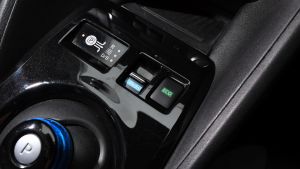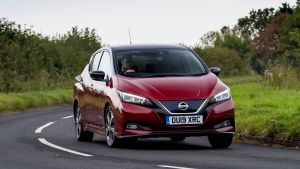If you’re interested in buying an electric or hybrid car, you may have heard about regenerative braking. But what does this term mean, and what is it like to drive a car with this system? Read on to find out everything you need to know.
When you step on your petrol or diesel car’s brake pedal, hydraulic fluid pushes brake pads against brake discs on each wheel (or drums on older and cheaper models). The resulting friction works to slow the car down, generating heat and wearing away at the material on the pads and discs in the process.
- SEE MORE Safest cars for sale in the UK 2020
Regenerative braking is a way of taking the wasted energy from the process of slowing down a car and using it to recharge the car’s batteries. On a normal car, braking simply wastes energy - but with regenerative braking, some of the energy is able to be reused.
Regenerative braking systems are common on many modern cars. On petrol and diesel models, it’s used to charge the battery that runs various ancillary systems in the car, meaning less work for the engine and less fuel burned. In these cars, the system is virtually imperceptible to the driver but in hybrid and pure electric cars regenerative braking takes a more active and obvious role. In these models, brake regeneration can help charge the larger batteries that directly drive the car.
How does regenerative braking work?
The electric motor in your hybrid or electric car runs in two directions - one to drive the wheels and move the car, and the other to recharge the battery. When you lift your foot off the accelerator pedal and onto the brake, the motor swaps directions and starts to put energy back into the battery.

When this process kicks in, you can feel the car start to slow down. It’s a different sensation in each car that has this function, because manufacturers can program-in how much regenerative braking occurs when you lift off the pedal.
All cars still have normal brakes, so if you push the pedal hard enough then the hydraulic system will kick in to get you stopped quickly (depending on your speed). Again, different cars will have different amounts of force on the pedal needed to get the brakes to kick in.
What does regenerative braking feel like?
There are many cars with regenerative braking, and they all feel a little bit different to use. In fact, in most electric cars you can even tailor the way it feels to your own preference.
If you want to harvest as much lost energy as possible you can set it to the maximum setting, or if you hate the sensation of the car braking itself, you can turn it off. In most cases the car’s brake lights will come on if the car is slowing quickly, even if you’re not even touching the brake pedal.
Some cars even have an automatic cruise control system that uses brake regeneration. The car in front is monitored by sensors and the brake regen is used to match that car’s speed on the road.

In many EVs, when you lift off the pedal completely it feels like you’ve got your foot firmly on the brake. This is often referred to as one-pedal driving, as you need to modulate your right foot to speed up and slow down, rather than swapping it between the brake and accelerator pedals.
In the Nissan Leaf this is referred to as the e-Pedal, and it can be switched on and off using a button on the dash. In the Kia e-Niro, there are paddles behind the steering wheel that allow four different levels of regeneration.
Yet in other models the regenerative force isn’t very strong. It feels a bit more like being in a high gear and using engine braking to slow down in a petrol or diesel car.
Regenerative braking usually has a detrimental effect on brake pedal feel, so it takes some getting used to - especially as you figure out the transition point between the regen braking and the hydraulic brake system.
For a run down on the best electric cars to buy now click here...
from Sitewide RSS feed https://bit.ly/3n5Fc9r
Comments
Post a Comment